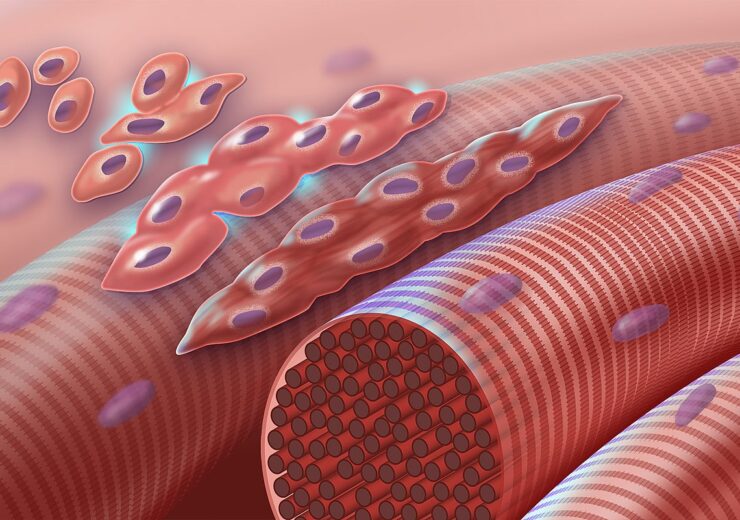Curi Bio has designed the MantaReady iPSC-derived skeletal muscle myoblasts for preclinical therapeutic discovery, high-throughput screening, and disease modelling

A graphic image of normal myoblast fusing together to form myocytes during myogenesis. (Credit: Darryl Leja, National Human Genome Research Institute, NIH from Wikimedia Commons)
US-based drug discovery platform developer Curi Bio has rolled out its MantaReady iPSC-derived skeletal muscle myoblasts to develop human 3D-engineered muscle tissues in the market.
The company has designed the MantaReady iPSC-derived skeletal muscle myoblasts for preclinical therapeutic discovery, high-throughput screening, and disease modelling.
The technology has been designed to meet the increasing demand for high-quality induced pluripotent stem cells (iPSC) -derived cells for 3D skeletal muscle engineering.
MantaReady cells are cryopreserved in high density to facilitate direct cell thaw tissue casting and quality controlled to assure optimal performance, the company said.
This saves time and reduces variability by removing the necessity to expand myoblasts for tissue engineering and subsequent tests.
Curi Bio CEO Nick Geisse said: “Through our innovative technology, we’re able to provide researchers with high-quality skeletal muscle cells that can be used to accelerate the drug discovery process and translational muscle biology research.
“This is a significant step forward in our mission to help researchers develop new treatment strategies for DMD.”
Currently, MantaReady Myoblasts are offered in two formats: a wild-type line made using iPSCs from a healthy donor and a Duchenne muscular dystrophy (DMD) disease line harbouring an exon 45 deletion and a 17bp deletion in exon 54 to maintain a true dystrophin null.
The company claimed that the isogenic pair will advance the field of preclinical drug discovery.
The cells are examined in both 2D and 3D engineered muscle tissues (EMTs) to ensure function and enriched to ensure myogenic purity is above 80%. EMTs are also screened for contractile twitch and tetanic force, contractile kinetics, fatigue, positive force-frequency, and longevity in culture.
Furthermore, the myoblasts rapidly fuse at high density in about five days to generate striated, multinucleated myotubes that express important myogenic markers like Desmin, Dystrophin, and MyHC.
Available in cryovials containing one million, six million, and 12 million cells, the MantaReady cells format comes in a kit which has Curi’s patented MantaReady Skeletal Muscle Medium, formulated to separate the cells into myotubes and aid 3D tissues for months in culture.
The new isogenic cell ranges are part of the increasing suite of Curi Bio’s MantaReady biological products. The company is planning to add additional products in the coming months.
